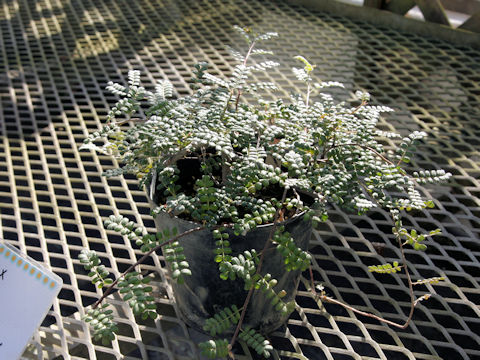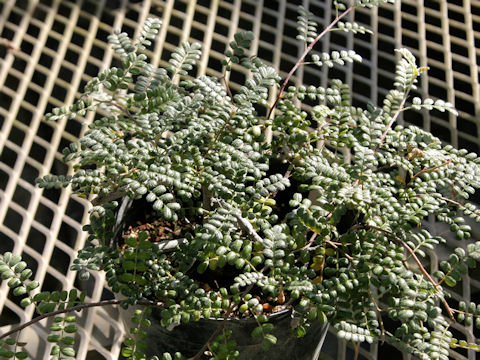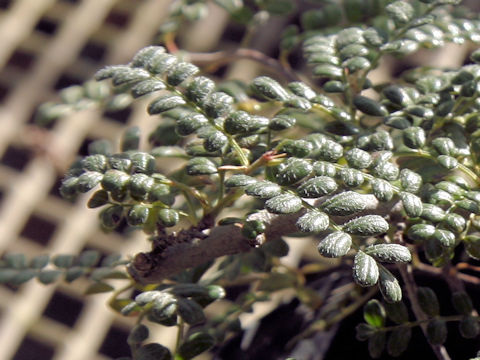 |








|

|
わが国の南西諸島から台湾の南東沖にある蘭嶼(らんしょ)島、それに中国南部に分布しています。海岸沿いの岩場に生え、高さは1〜2メートルになります。幹は紫褐色で匍匐し、若枝には白い軟毛が密生します。葉は奇数羽状複葉で、卵形から楕円形の小葉が7〜15個つきます。3月から4月ごろ、茎頂に散房花序をだし、白色の5弁花を咲かせます。果実は球形のナシ状果で、黒紫色に熟します。台湾華語では、「小石積」と呼ばれます。
|

|
バラ科テンノウメ属の常緑小低木で、学名は Osteomeles anthyllidifolia var. subrotunda (syn. Osteomeles subrotunda)。英名は Polynesian bonyberry。
|

|
The Polynesian bonyberry (Osteomeles anthyllidifolia var. subrotunda) belongs to Rosaceae (the Rose family). It is an evergreen shrub that is distributed from the Nansei Islands of Japan to Orchid Island off the southeastern coast of Taiwan, and to southern China. It grows on rocky shores and can reach 1-2 m in height. The trunk is purple-brown and crawling, and the young branches are densely populated with white vellus hair. The leaves are odd pinnate compound with 7 to 15 ovate to elliptic leaflets. From March to April, corymbs are borne on the shoot apex and bloom white five-petaled flowers. The fruits are spherical pome-like and ripen to black-purple. In Taiwanese Mandarin, it is called "小石積".
|

|
茨城県つくば市「つくば実験植物園」にて、2022年01月16日撮影。
|



